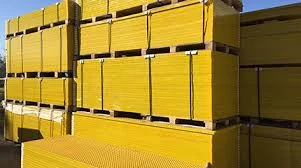
-
 Afrikaans
Afrikaans -
 Albanian
Albanian -
 Amharic
Amharic -
 Arabic
Arabic -
 Armenian
Armenian -
 Azerbaijani
Azerbaijani -
 Basque
Basque -
 Belarusian
Belarusian -
 Bengali
Bengali -
 Bosnian
Bosnian -
 Bulgarian
Bulgarian -
 Catalan
Catalan -
 Cebuano
Cebuano -
 China
China -
 China (Taiwan)
China (Taiwan) -
 Corsican
Corsican -
 Croatian
Croatian -
 Czech
Czech -
 Danish
Danish -
 Dutch
Dutch -
 English
English -
 Esperanto
Esperanto -
 Estonian
Estonian -
 Finnish
Finnish -
 French
French -
 Frisian
Frisian -
 Galician
Galician -
 Georgian
Georgian -
 German
German -
 Greek
Greek -
 Gujarati
Gujarati -
 Haitian Creole
Haitian Creole -
 hausa
hausa -
 hawaiian
hawaiian -
 Hebrew
Hebrew -
 Hindi
Hindi -
 Miao
Miao -
 Hungarian
Hungarian -
 Icelandic
Icelandic -
 igbo
igbo -
 Indonesian
Indonesian -
 irish
irish -
 Italian
Italian -
 Japanese
Japanese -
 Javanese
Javanese -
 Kannada
Kannada -
 kazakh
kazakh -
 Khmer
Khmer -
 Rwandese
Rwandese -
 Korean
Korean -
 Kurdish
Kurdish -
 Kyrgyz
Kyrgyz -
 Lao
Lao -
 Latin
Latin -
 Latvian
Latvian -
 Lithuanian
Lithuanian -
 Luxembourgish
Luxembourgish -
 Macedonian
Macedonian -
 Malgashi
Malgashi -
 Malay
Malay -
 Malayalam
Malayalam -
 Maltese
Maltese -
 Maori
Maori -
 Marathi
Marathi -
 Mongolian
Mongolian -
 Myanmar
Myanmar -
 Nepali
Nepali -
 Norwegian
Norwegian -
 Norwegian
Norwegian -
 Occitan
Occitan -
 Pashto
Pashto -
 Persian
Persian -
 Polish
Polish -
 Portuguese
Portuguese -
 Punjabi
Punjabi -
 Romanian
Romanian -
 Russian
Russian -
 Samoan
Samoan -
 Scottish Gaelic
Scottish Gaelic -
 Serbian
Serbian -
 Sesotho
Sesotho -
 Shona
Shona -
 Sindhi
Sindhi -
 Sinhala
Sinhala -
 Slovak
Slovak -
 Slovenian
Slovenian -
 Somali
Somali -
 Spanish
Spanish -
 Sundanese
Sundanese -
 Swahili
Swahili -
 Swedish
Swedish -
 Tagalog
Tagalog -
 Tajik
Tajik -
 Tamil
Tamil -
 Tatar
Tatar -
 Telugu
Telugu -
 Thai
Thai -
 Turkish
Turkish -
 Turkmen
Turkmen -
 Ukrainian
Ukrainian -
 Urdu
Urdu -
 Uighur
Uighur -
 Uzbek
Uzbek -
 Vietnamese
Vietnamese -
 Welsh
Welsh -
 Bantu
Bantu -
 Yiddish
Yiddish -
 Yoruba
Yoruba -
 Zulu
Zulu
Understanding FRP Fitting Applications in Modern Engineering Systems and Structures
Understanding FRP Fittings A Comprehensive Overview
Fiber Reinforced Polymer (FRP) fittings have emerged as a revolutionary solution in various industries, particularly in construction, oil and gas, and wastewater management. These fittings are crucial components that enhance the durability and reliability of piping systems. In this article, we will explore the characteristics, advantages, and applications of FRP fittings.
Understanding FRP Fittings A Comprehensive Overview
Another key attribute of FRP fittings is their excellent corrosion resistance. Traditional metal fittings often succumb to rust and degradation when exposed to harsh chemicals or environmental conditions. In contrast, FRP fittings do not corrode, making them ideal for use in aggressive environments. This advantage significantly extends the service life of pipelines and reduces maintenance costs, making FRP a cost-effective choice over the long term.
frp fitting

In addition to corrosion resistance, FRP fittings also exhibit outstanding thermal stability. They can withstand extreme temperatures without losing their structural integrity, making them suitable for operations in industries such as oil and gas, where temperature fluctuations are common. Furthermore, their lightweight nature contributes to lower transportation costs and easier installation processes, enhancing overall project efficiency.
The versatility of FRP fittings allows them to be tailored for specific applications. They can be manufactured in various shapes and sizes to meet the diverse needs of projects. Common types of FRP fittings include elbows, tees, flanges, and reducers. These fittings can be used in a multitude of settings, ranging from pressure piping systems in industrial processes to drainage systems in municipal applications.
However, the adoption of FRP fittings is not without challenges. Their initial costs may be higher than traditional materials, which can deter some companies from making the switch. It is essential for decision-makers to consider the total lifecycle costs, including maintenance and replacement, to fully appreciate the long-term benefits that FRP fittings can offer.
In conclusion, FRP fittings represent a transformative advancement in materials technology, offering unmatched strength, lightweight design, and impressive resistance to corrosion and temperature extremes. Their growing popularity in various industries underscores their effectiveness and reliability. As more organizations recognize the value of investing in high-performance materials, FRP fittings are likely to play an increasingly significant role in the development of modern infrastructure. Investing in these innovative solutions can lead to enhanced operational efficiency and significant cost savings over time, making them a smart choice for current and future projects.
Latest news
-
Exploring the Benefits of Top Hammer Drifter Rods for Enhanced Drilling PerformanceNewsJun.10,2025
-
High-Precision Fiberglass Winding Machine for GRP/FRP Pipe Production – Reliable & Efficient SolutionsNewsJun.10,2025
-
FRP Pipes & Fittings for Shipbuilding - Corrosion-Resistant & LightweightNewsJun.09,2025
-
Premium FRP Flooring Solutions Durable & Slip-ResistantNewsJun.09,2025
-
Premium Fiberglass Rectangular Tanks Durable & Lightweight SolutionNewsJun.09,2025
-
Tapered Drill String Design Guide Durable Performance & UsesNewsJun.09,2025









